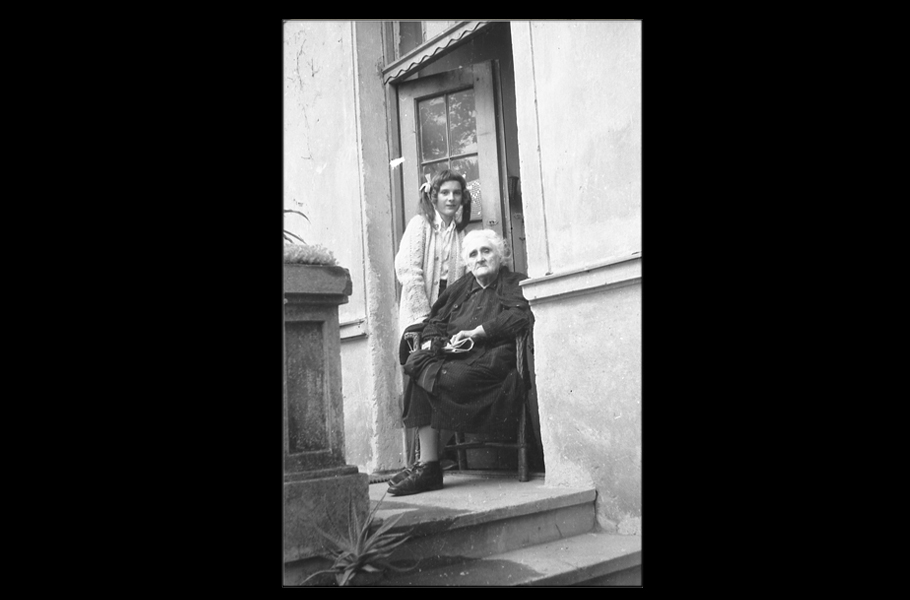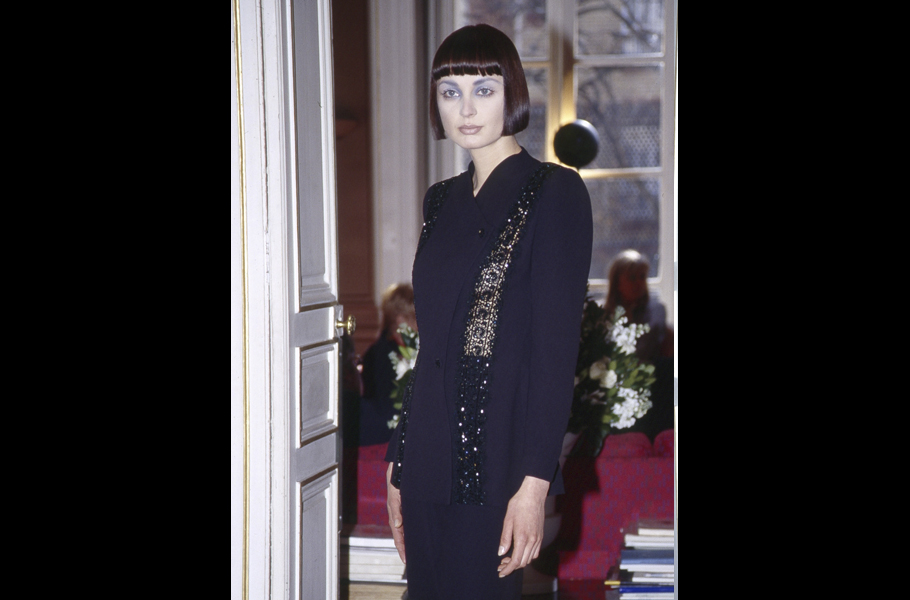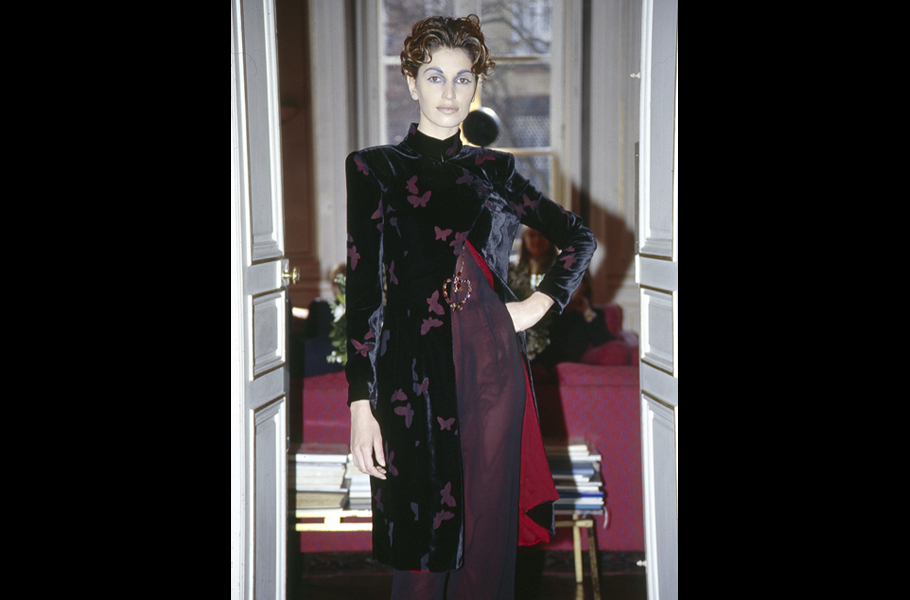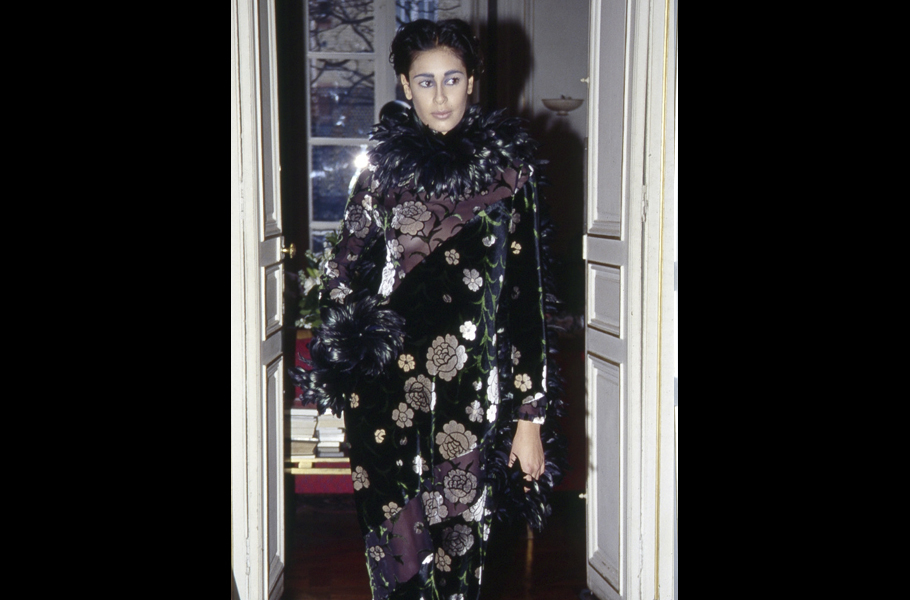A Nagymama története
Emlék-kép
"All my grandparents’ possessions were nationalized as early as June 1945. Everything went down the drain: houses, forests, dives… and then Grandma was offended. She made a determinded and prideful vow never to go out the street any more, never to look in the mirror any more. She didn’t want to see. And she didn’t want to be seen. It was the photos that kept us alive: I knew exactly all her hats from her girlhood, I could feel the smell of crèpe-de-chien from the stories she told.
In our dreams we were travelling, every week gazing ath her last pair of lace-stockings unwrapped from a piece of silk-paper, then trimming all the kitchen linen with fine embroidery.
Thirty years later, as I stood behind her armchair as a graduate student, my brother, Miska took a photograph of us. When I showed her the picture few days later, she looked at me inquiringly, and asked: „Who is this old woman?” I grasped her hand, tongue-tied and moved, as she slowly recognized herself by her shoes, visible on the photo.
It was me who broke her vow.
Another twenty years have passed, and as we unpacked our first collection in Paris, the Fench were shaking their slackened hands hissing: „What a luxury!!!” And really, what is this luxury?
I’m not sure, but year after year I open up great spaces, invite many guests, and create an haute-couture collection with a hundred models. Luxury collections made for
a market with unrealistically slim chances of sales.
And what is luxury for me?
The splendour of variety, the sensitivity of style, the harmony of contrasts. The style that unifies function and extra-vagance: this is no fiction, but a fact that promises and performs,draws a new paradigm based on tradition and evokes a harmony that still keeps the secret.
In my interpretation, haute-couture is the poetry of robing, individuality tailored to a person yet based on artisans’ traditions.
The craftsman’s ready-made clothes, the couture line, represent a limited series of variations. It is the concurrence of raw materials of the highest standards and modern technologies in the hands of a designer who knows no bounds.
And prêt-à-porter: dress, but not uniform, for the successful female professional.
A fashion designer may daydream of star models on a catwalk, but can equally achieve top human accomplishments with collections for those forced into wheelchairs.
Creative business?
Like a girl born with scissors in her hand, as a child I was cutting dresses for my teachers and students. They were wearing the dresses I sewed as I learned, and for a long time I believed that all girls could tailor and sew, just they are lazy, and that is why they ask for my help. We lived in a small town, everybody knew everybody else."
/Katti Zoób/





